Your Clothes Are Made Of Plastic
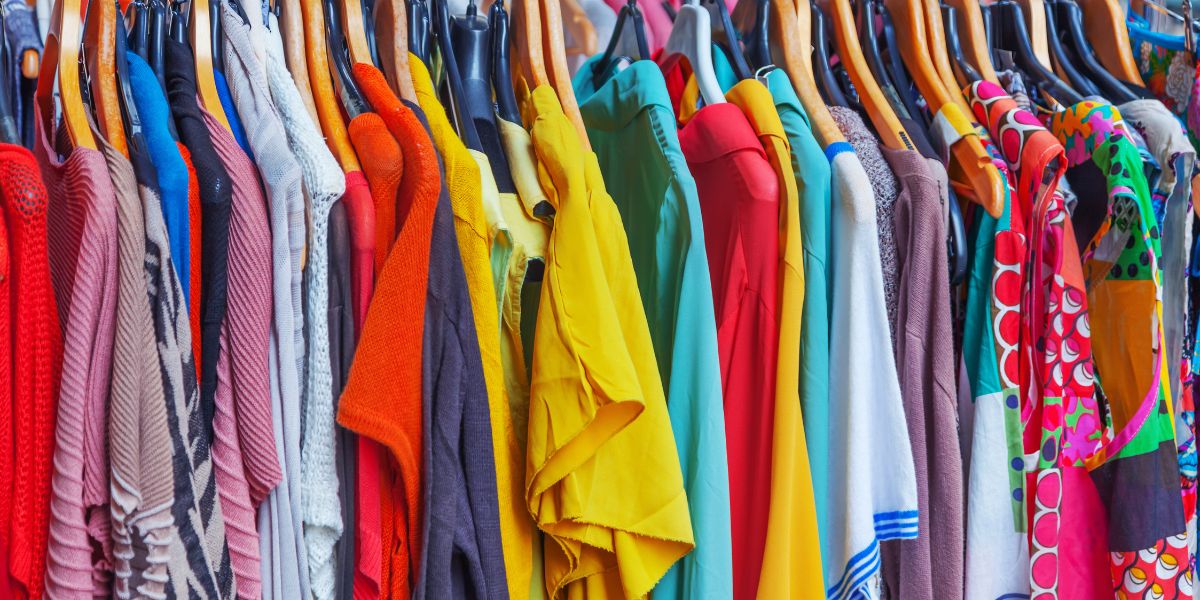
This topic has been on my mind for a long time. A really long time. I don’t like wearing plastic. I don’t like the way it feels on my skin, I don’t like the way it feels when I fold it, and I don’t like what it’s doing to our personal and global health.
Lately, it is getting harder and harder to find clothes that aren’t laced with plastic. Like sugar in food, plastic comes in many forms with many different names. Too few realize that unless you’re paying close attention, most of your wardrobe (and bed, and couch, and the list goes on) contains a whole lot of plastic.
The challenge was especially highlighted for me when I began my search for workout and yoga clothes that were ‘sustainable’. That was the word I used in my search. What kept turning up for me on all the ‘green’ blogs was workout wear, sports bras, underwear and other yoga clothing made out of ‘recycled materials’. Some would highlight how many water bottles were used to make their pants. How much garbage was spared from the landfill, etc?
The claims went on and on but didn’t change the fact that what we are buying, what we’re wearing up close and personal to our skin, the largest organ of the body, is plastic.
I want none of it.
Let’s First Start with The Good Stuff: The Natural Fibers
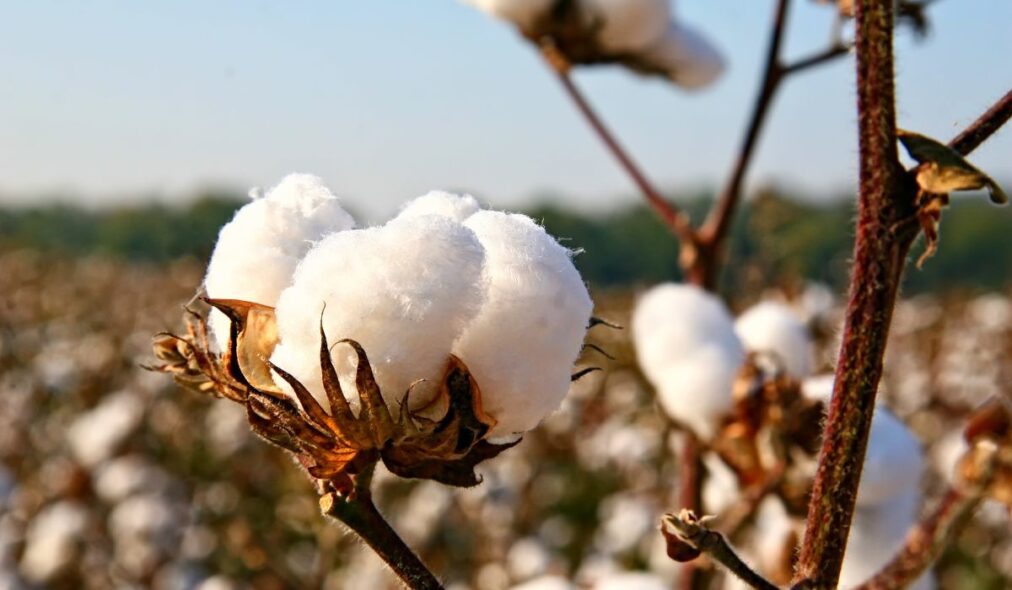
For starters, there isn’t a whole lot. In clothing we’re primarily looking at:
- Cotton
- Linen (made from flax)
- Wool
- Silk
- Hemp
Some may say that bamboo may work but have you ever touched bamboo? They can build four story buildings out of just bamboo. That stuff is hard and tough and strong. Typically it takes a massive chemical load to make it into the soft fabric we know. Though the fiber itself is considered environmentally friendly because of how fast it grows, it doesn’t go from wood to undershirts without a heavy load of processing. Plus, they are often found as bamboo/viscose blends (read: plastic cocktail). You can read more about the process here.
I’m all about the 100 percenters on natural fibers.
There are a lot of benefits to natural fibers, including the fact that they are naturally flame retardant, more breathable, durable and comfortable.
Everything else is what then? Yes. Plastic.
Before we move on I do want to mention the importance of not just cotton but organic cotton.
Chemicals In Our Clothes
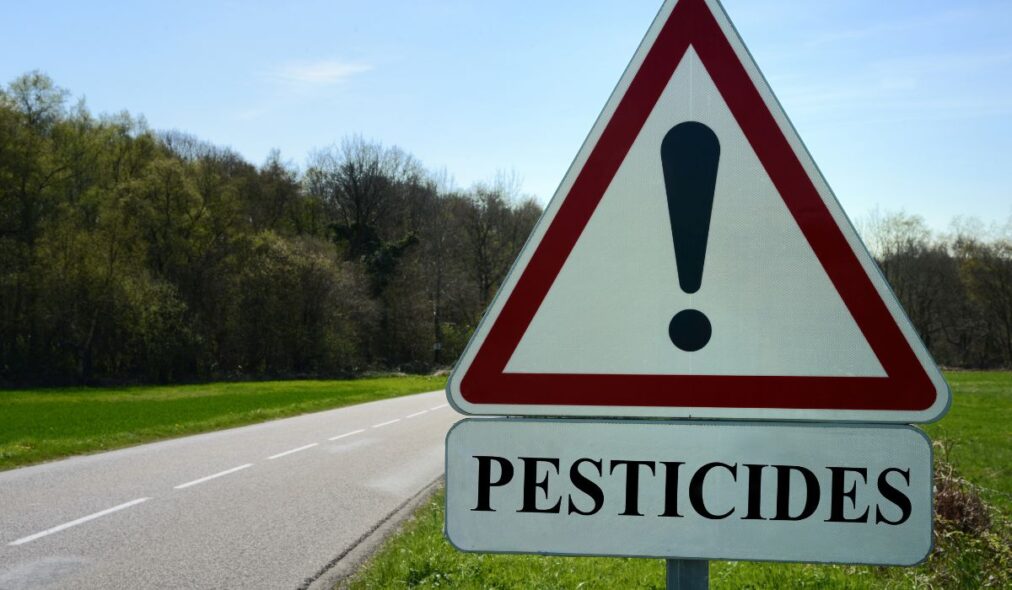
Chemicals in Cotton
In grade 9 I did a science project on the chemicals found in conventionally grown cotton. This is information I can’t ever forget. The residues were shocking.
Cotton is one of the most heavily sprayed crops and is frequently referred to as ‘the dirtiest crop in the world’.
- 2.4% of the world’s usable cropland is planted with cotton, but this crop uses 16% of insecticides and 7% of herbicides.
- $3.3 billion dollars worth of chemicals are sprayed on cotton annually.
- 150 grams of pesticides and other agricultural chemicals are used to produce the cotton for just one t-shirt.
- Conventional cotton farming’s massive use of pesticides and water contributes to environmental pollution and the destruction of ecosystems. This affects every single human, plant and animal on the planet.
- Eight of the top 10 pesticides used in conventional U.S. cotton are classified as moderately to highly hazardous by the World Health Organization.
- 1-3% of cotton workers are affected by acute poisoning.
- Child and slave labour is common in conventional cotton farming.
- Cotton crops are highly genetically modified, which carries an array of risks you can read about in-depth here.
More Chemicals in Other Fabrics
But that’s not all. Chemical use is widespread in the fashion industry and plastic clothes. Consider:
- Colour dyes, whose wastewater is released often untreated into nearby rivers, where it reaches the sea, eventually spreading around the globe.
- Highly fluorinated compounds are used to make durable waterproof finishes, such as those on rain jackets.
- Phthalates, which are hormone disruptors, are used as plasticizers or softening agents in fake leather (aka PVC) that is often used to make things like purses, wallets, shoes, belts and some unfortunate pants and dresses. This is often used in T-shirt printing too.
- Nonylphenols, another variety of hormone disruptors are commonly found in commercial detergents, as well as in compounds that are used to make dyes stick to the fibres.
- Nanosilver, an anti-bacterial agent, is commonly used in sports attire that claims to have “antimicrobial” and odour reducing qualities. Nanosilver has been found in waterways where products are both produced and worn and this chemical is being taken up by plants.
The Most Common Plastic Fabrics You’re Likely Wearing
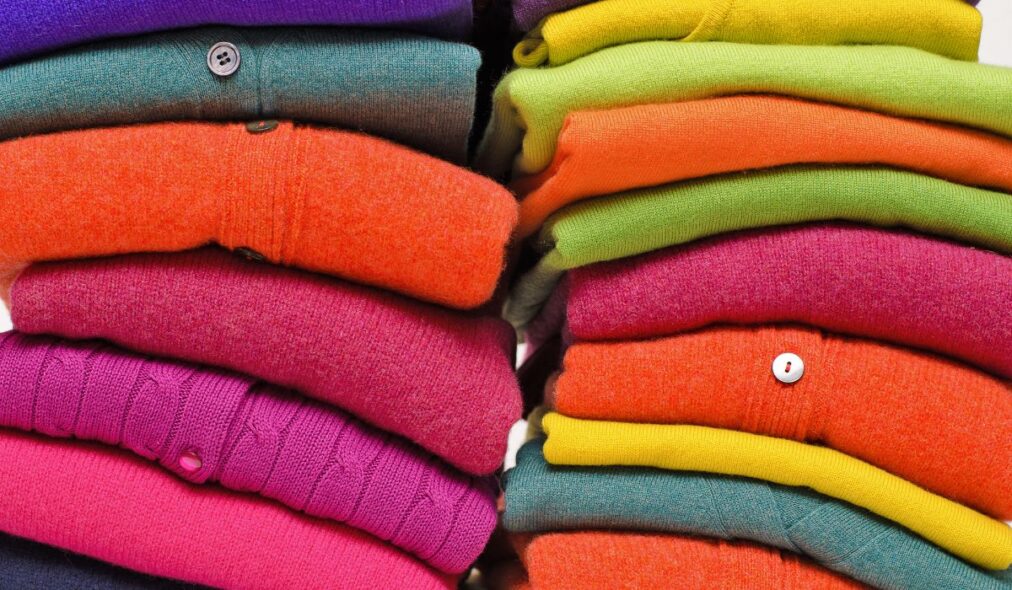
Acetate
Fabrics made from acetate are usually very smooth and shiny. They’re derived from wood pulp – which might make it seem like a ‘natural’ choice and offers a shiny, silk knock off option. Acetate isn’t the worst all on its own, as it does breakdown easily, however, in most applications (often fashion accessories) it is mixed with phthalate plasticizers to soften it up. Chemicals in acetate production can also cause skin and respiratory irritation in factory workers.
Where you’re wearing it: Fancy dresses (wedding gowns, too), linings, blouses, and many accessories like sunglasses, and umbrellas.
Acrylic
Acrylic is frequently used to make clothes that have a comfy, wooly texture. Unfortunately, acrylic has been linked to increased breast cancer risk for women exposed to it in the workplace. Acrylic is a synthetic polyacrylonitrile polymer, aka plastic that can be woven and spun together.
Where You’re Wearing It: Sweaters, hoodies, boot lining, knit hats and gloves, athletic wear, and also carpeting, blankets, roller brushes, upholstery, and area rugs.
Nylon
Nylon is a synthetic polymer with ties to the oil and gas industry, as it’s usually made from petroleum. Its production creates greenhouse gases, plus it doesn’t degrade.
Where You’re Wearing It: Leggings. stockings, activewear, yoga pants, and other tight clothing and stretchy.
Polyester
Polyester is most commonly made from a plastic called polyethylene terephthalate (PET), which is heated and stretched into fibers. It uses a lot of water, pollutes the environment via microplastics, and is heavily used in fast fashion (which usually ends up in the landfill). I have a love hate with this one as so many of my vibrant patterned vintage dresses are polyester – but I would love them even more if they were cotton.
Where You’re Wearing It: Where aren’t you!?!?! This is one of the most popular synthetics in clothing used in fleece wear like sweats, undergarments, scarves, ties, suiting, dresses, blouses, and epic vintage dresses.
Rayon
Rayon, also called viscose, uses a number of chemicals deemed unsafe including acetone, ammonia and carbon disulphide. Another unfortunate consequence: the demand for this fabric means forests are being destroyed to plant bamboo for clothing, which is then manufactured into rayon. Rayon is wildly popular in fashion because it’s such a shapeshifter and can take on the texture and look of cotton, wool and even silk. It also isn’t a durable fabric which means it’s often found in blends but will degrade and wear out quickly.
Where You’re Wearing It: Activewear, dresses, blouses, knits.
Fleece and Microfleece
Fleece is usually made from polyester or recycled plastic bottles. Either way, these plastics heavily shed into our environment through microplastics, which is a massive problem. This study found that fleece shed more microplastics than any other fabric they studied.
Where You’re Wearing It: Jacket linings, heats/mittens/scarves, blankets, sweatshirts/sweatpants, kids stuffed animals.
Spandex
Also known as lycra, this stretchy fabric is made of polyurethane (derived from petroleum) and chemicals are heavily used in its processing.
Where You’re Wearing It: 1980’s themed parties, activewear, performance fabrics, leggings, stretchy jeans, undergarments, socks, fitted dresses and tops.
Clothing Designed to Be Stain-Resistant, Wrinkle-Resistant, Etc.
Any clothing with a special feature like stain-resistant, wrinkle-resistant, mold-resistant, and the like is heavily treated with chemicals.
As just one example, recently my school The Academy of Culinary Nutrition tried to find a new apron supplier to make custom aprons for our certified instructors. It was incredibly difficult to find companies that made them without a Teflon coating.
Formaldehyde, a respiratory and skin irritant and also a known carcinogen, is used to create garments that carry a “permanent press” claim. Testing done in New Zealand discovered formaldehyde levels in some Chinese clothes exports up to 900 times higher than the prescribed safety limit.
Where You’re Wearing It: Aprons, outdoor gear, backpacks, dress shirts, and also carpeting, blankets, and furniture.
And every single one of the above plastic clothing fabrics contains microplastics, which are devastating to the environment.
You can read about microplastics (and where to find them) in this post.
Wait, Isn’t Plastic Part of the Oil & Gasoline Industry?

Climate change is the new hot topic you’re not supposed to contest, and I am not going to contest that we have done major harm to our planet. There is a difference between the measures being dictated for climate change versus actual care for the earth’s ecology.
Ultimately, there is very little being done to address the insanely horrific volume of plastic we are currently creating (and creating demand for!) on this planet.
Though not all, much of plastic is derived from petrol chemicals. I’m not sure anyone gives this much thought. Yes, it can be made out of some plants, but mostly natural gas and oil which are then refined into ethane and propane. These substances are then treated to turn them into ethylene and propylene (a common material for carpeting!). These materials are then mixed and matched to form different types of plastics, also called polymers.
There is nowhere for this plastic to go. It does not break down and vanish in a harmless way. Instead, we consume it unknowingly, it’s in the air we breathe, the water we drink and of course, in the clothes we wear.
Every year, we produce 380 million tons of plastic. It ends up primarily in our water and in landfills.
Since 1950 only 9% of plastics ever created have been recycled. We are using plastic more than ever before. Nearly half of all plastics ever produced have been made since the year 2000.
I’ve written extensively about plastic before in these posts:
- Plastic Packaging and The Inconvenient Truths of Recycling
- How Plastic Packaging Affects Your Health and the Planet
- Sequins and Glitter Lose Their Sparkle: Unexpected Sources of Microplastics
- How To Stop Using Plastic Wrap and Other Kitchen Disposables
- How to Store Food Without Plastic
It is because of this massive reliance on plastic that it is now found in just about every article of clothing we own.
Why Is Plastic In Clothing Such A Problem?
Exposure to plastics can have a negative impact on our health, including endocrine disruption, digestion and gut disruption, increased cancer risk, and compromised immune health. You can read about this in detail here.
When it comes to clothing, my primary concerns are:
- The chemicals used in clothing absorb into the body through our skin
- Plastic breaks down in the wash (microplastics), entering our waterways
- Plastic in clothing can become an inhalant – as shown in this study, which concluded that plastic clothing emits as much plastic pollution into the air as it does into the water through washing
- Plastic clothing is very often fast fashion, which is worn for one season and then ends up in the landfill
Is Clothing Made From Recycled Plastic Bottles Any Better?
You’ve likely seen a lot of brands promoting themselves as sustainable by using plastic bottles to make their clothes. But this doesn’t solve the problem.
Plastic clothing is still going to impact our health and have a lasting effect on the environment.
And, as this article points out, clothing made from plastic bottles can actually disrupt and shorten its life cycle. A normal plastic bottle can be recycled up to 10 times, in a ‘closed loop’ system that breaks them down and builds them back up into other things. When that bottle is transformed into clothing, it usually moves into a ‘linear system’ – and often accelerates that bottle’s journey to the landfill because we purchase and discard our clothing at such a rapid pace.
Don’t Forget About Your Underwear!
Everything I’ve talked about above? Also applies to your underwear (and bras, if you wear them). Polyester is an extremely common underwear fabric. Some types of underwear even have per and poly fluoroalkyl substances (PFAs), which are referred to as ‘forever chemicals’.
Read your underwear labels. Given how close these fabrics are to very sensitive areas, I’d recommend prioritizing underwear made with natural, non-synthetic fabrics.
Hidden Sources of Plastic In Clothing
Other places where you might find plastic in clothing are:
- Plastic decals on T-shirts
- Buttons
- Zippers
- Elastic content
What Can You Do?
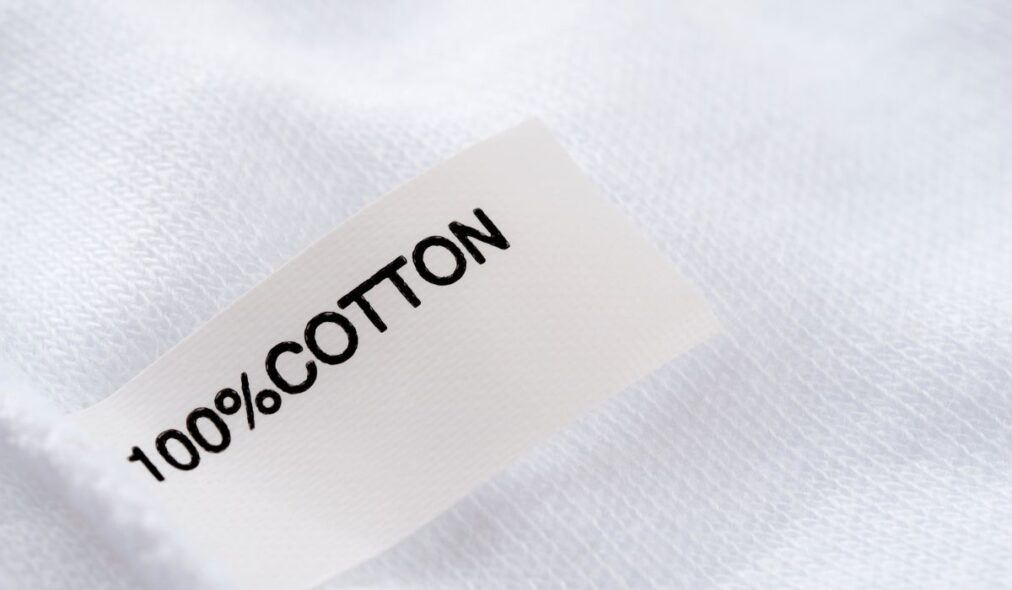
Look At The Labels
You might be surprised by what the label says. The basic rule of thumb, look out for labels that offer 100% cotton, or 100% wool etc. Look out for those 100% labels and if it’s organic and ethically sourced, even better.
Pay More, Buy Less
Yes. Enough with the fast garbage fashion. Be mindful and thoughtful with your purchases. Go to your local stores, try stuff on, look at the tags and buy the things that you know you’ll get a lot of wear out of for a long time to come. Fashion tip: invest in high quality basics and make it your own with fun accessories (I like vintage for this).
Get The Plastic Clothes When The Functionality of Plastic Matters
There are benefits to some plastic clothes and we don’t need to ignore this fact. I’m thinking outdoor gear, specifically, winter gear like snow pants and coats.
You can get cotton duck, a heavy canvas, and use wax on it and over time it will become waterproof and might even last you a lifetime because of how easy this fabric is to patch, but I also recognize most people won’t do this.
At the very least though, when you’re buying your plastic outdoor gear, ensure it doesn’t have an extra layer of water repellent chemicals on it. This is common on both plastic carpeting (if the fabric starts with the ‘poly’ it’s plastic), coats and kids backpacks.
Watch Out For Fabrics with a Trademark Symbol
You can’t trademark 100% cotton or 100% wool. So what is that other stuff? Often they’ll site proprietary. I’ll site chemical cocktail fabric.
Go Thrifting
Try to find thrift items that are made with quality fabrics (it may take some searching, but they’re out there!). And, at the very least, you may divert some items – even if they have some plastic in them – from the landfill.
Wash Mindfully
You can purchase washing bags that help reduce microplastics in our waterways. Also consider what items need to be washed after every wear, or what could be worn a few times before it goes into the wash.
Dispose of Old Stuff Mindfully
Fabric should not be going in the garbage.
- Determine who or where you can resell and/or donate things you no longer wear but are in wearable condition.
- Can the non-wearables be repurposed? Used to patch old things, make some tote bags from or craft with them?
- Is there a clothing/textiles recycling option near where you live? Consider doing a drive in your community and taking a single haul as a wonderful community service.
Buy The Best Quality You Can Truly Afford
I continue to be amazed by what people refer to as ‘expensive’, like organic food, but what they also manage to buy, like a ridiculous amount of disposable clothing that lasts one season or a couple washes. Quality clothing made from quality materials is an investment for sure. Choose wisely. Own less and take good care of it.
Quality clothing is different from brand name clothing though both can carry an extra cost. Spend more where it matters on the basics you’ll get years’ worth of wear out of. You get far more traction and way better value out of a $250 pair of winter boots that will last you ten seasons compared to a $50 pair that you’ll be replacing more frequently. Part of this is really about shifting our thinking and the culture around clothing.
Consider this question: What are the fewest items I can get away with and still love what I wear and feel great when I get dressed? Keep that in mind as you sort through what you own and consider new purchases.
Plastics in clothing is a large, and frankly overwhelming, problem. But if we all think about what we can contribute – (and buying less clothing overall is a huge one!) – we can all be part of the solution.
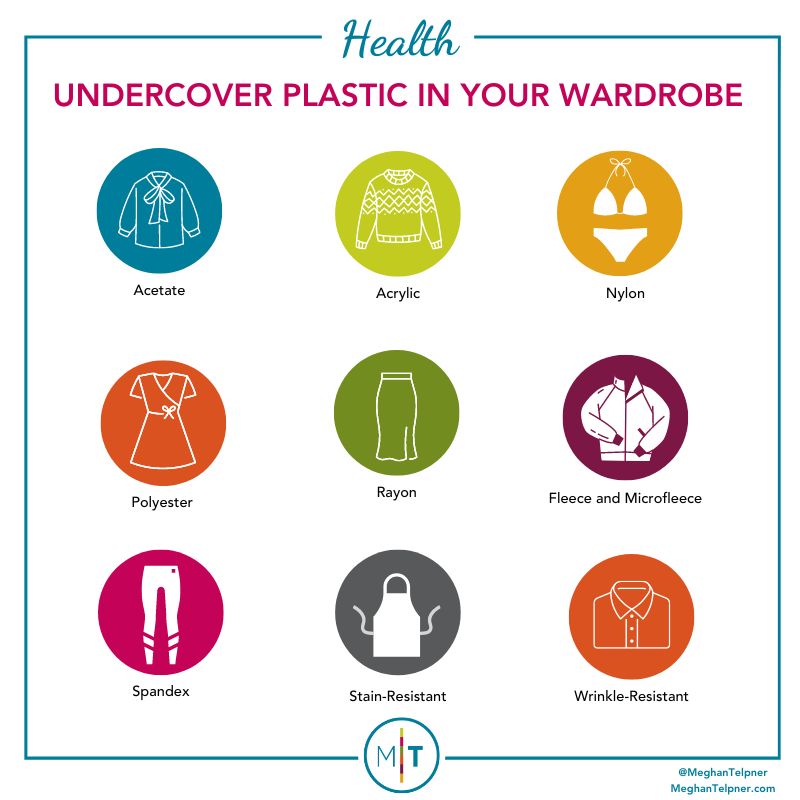
Free Resource Library
Enjoy more than 40 downloadable guides, recipes, and resources.
















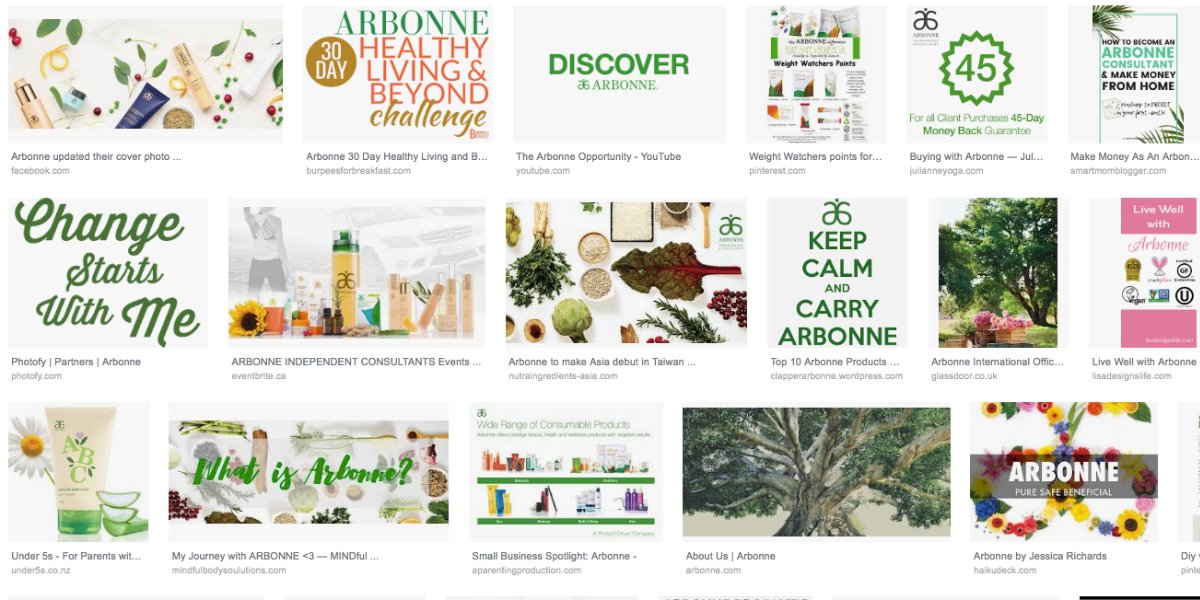
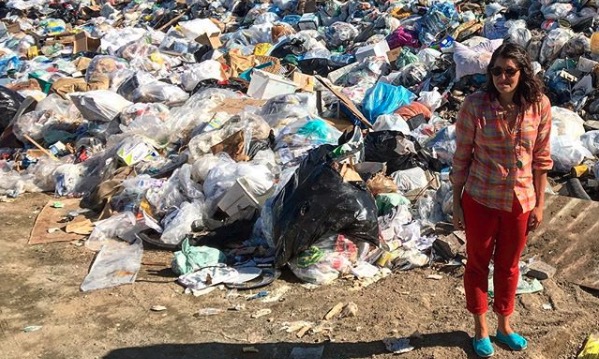

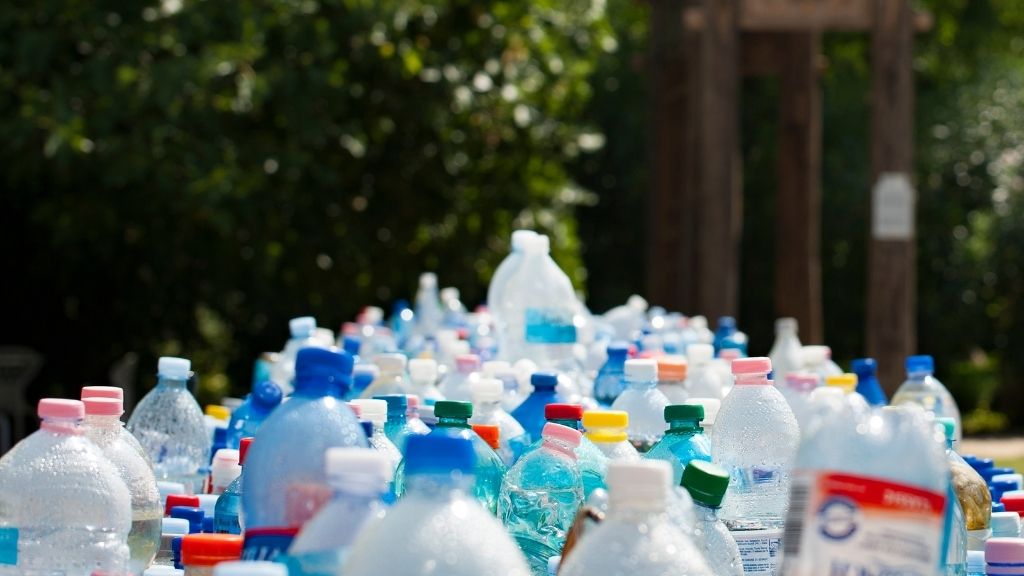
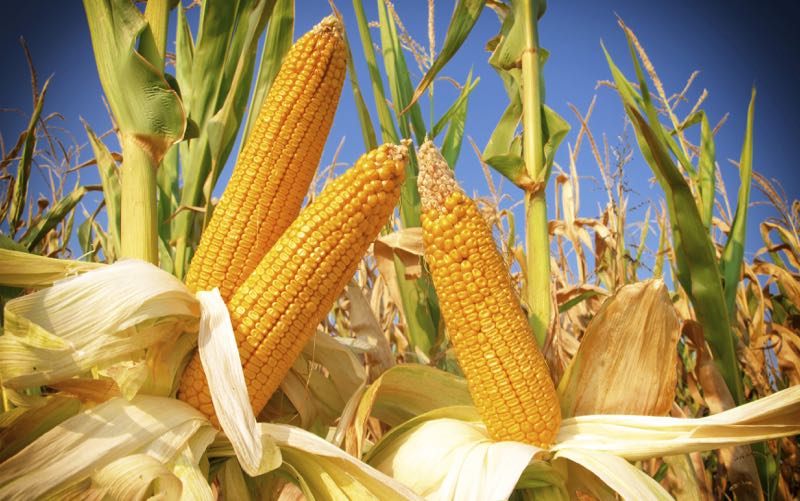


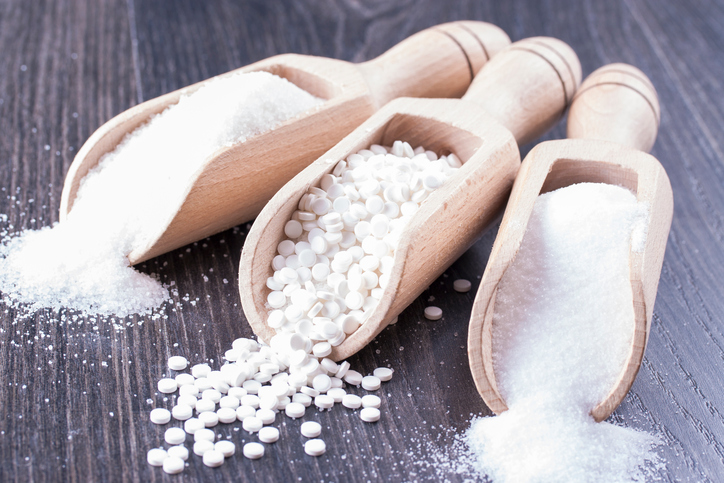
I truly appreciate the thought and research you have given to this issue of plastic fabrics Meghan . I also appreciate that it is not comfortable for some people to wear plastic fabrics – I myself prefer cotton and wool. However, no where in your article do you touch on the issue of the people employed to make such fabric, and garments. Often they are underpaid, work long hours without benefits and holidays. Their families depend on the money they earn often just for the basics to live. Going up the chain what about those who work in retail? I had no option, nor did my three daughters when we were students struggling to pay for our educations. Plus, how many people can afford good quality “green” fabrics today when the cost of food and healthcare items are steadily increasing due to inflation, but paycheques are not keeping pace?
It’s a dual dilemna for me. Buy less and more organically grown fabrics which has the potential to affect the livelihood of a poorer family – Or demand the fashion and retail industry do better to eliminate plastics from their industry?
Tough choices!